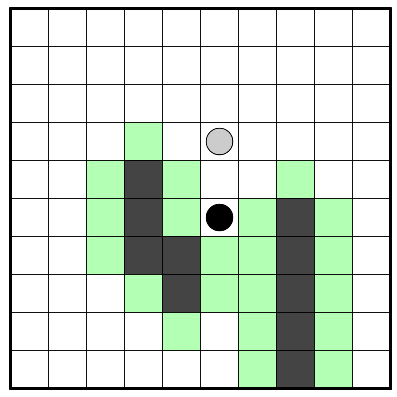Statue Park clues all give the same amount of information: there is a tile here/there is not a tile here.
But depending on their location, you can get a different amount of information! To demonstrate this, consider this puzzle (where the piece bank is the pentominoes). Say I've already determined the two shapes I've shaded in.

If I want to place a clue at the gray dot, a black clue would give almost no information. But a white clue would tell me a lot - specifically, that it has to be the W pentomino (and would give additional connectivity information).
And of course, if I wanted to place a clue one cell below that instead, that would give absolutely no information - it would have to be a black clue.
To answer the actual questions:
How can I check if a clue would "make a previous deduction trivial" when placing it?
There's no surefire way to tell. The best way to avoid this happening is to keep your key deductions in mind, and make sure that the later steps require information learned from them. Would the same thing be possible if the solver hadn't figured out that key step? If so, they might be able to use that to work 'backwards', making it much easier to fill the region you intended as the break-in.
Ideally, most of your clue placements are relatively useless by themselves. They should usually be most meaningful when you have some other particular information from a previous part of the solve. The example above demonstrates how this might work - without those two pentominoes figured out, the black dot and the white dot give very little information. But once you have them, you can fully place another piece.
How can I check the puzzle afterwards to make sure that it is not overclued?
Well, there's the painful way of "make a copy of the puzzle for each clue without that clue; try to solve each one". But that's not a particularly efficient way to go about things. To check for general overcluing, it's sometimes helpful to just try to solve your puzzle and keep track of which clues you actually used. You may notice that one of your clues logically implies another one, so the second one is unnecessary. (Unnecessary clues aren't always bad - if they're there for theme and obviously don't do very much, they're perfectly harmless.)
If you're worried about key steps being skippable, the best way to figure out whether that's true is to try it! See if you can solve the puzzle without using the particular step you want people to figure out, or how much progress you can make while avoiding it.
And of course, like all puzzles, the best way to see if there's an alternate way to figure things out is to get it testsolved. Testsolvers will be able to catch things that you will not, because they don't have the same perspective.

